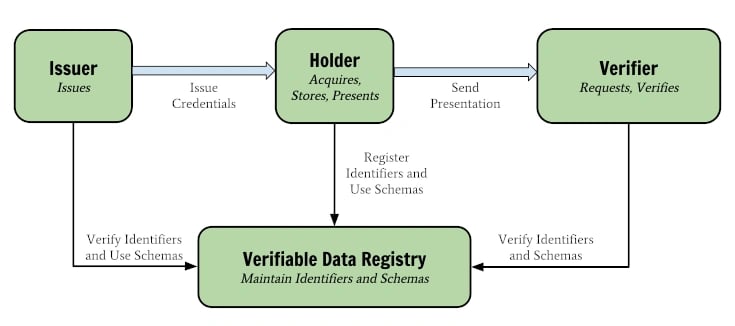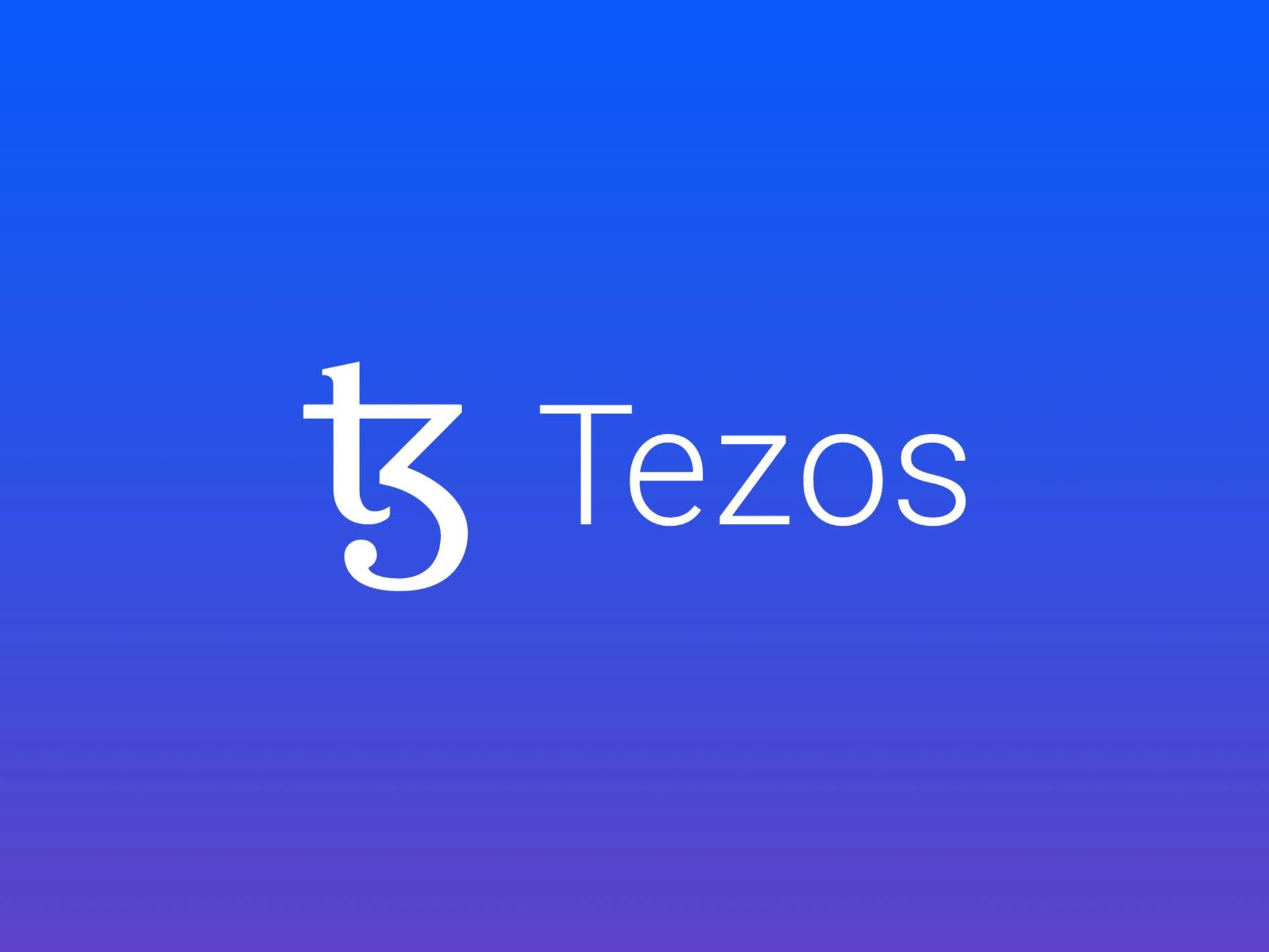위키 구독하기
Share wiki
Bookmark
Tezos
Tezos
테조스(Tezos)는 아서 브라이트만(Arthur Breitman)과 캐슬린 브라이트만(Kathleen Breitman)이 설립한 오픈소스 기반의 자체 수정 블록체인 네트워크로, 탈중앙화 애플리케이션(Dapps) 및 스마트 계약을 가능하게 합니다. [1]
개요
테조스(Tezos)는 오픈소스 기반의 커뮤니티 자치형 블록체인 네트워크로, 자산 결제 및 탈중앙화 애플리케이션(dApps)을 위한 스마트 계약을 실행합니다. 2018년 9월 메인넷 출시 이후 검열 저항성, 탈중앙화 및 사용자 제어 기능을 제공하며, 네트워크의 기본 통화는 XTZ(테즈, ꜩ)입니다. [3][18]
테조스의 가장 주목할 만한 특징 중 하나는 하드 포크 없이 프로토콜 내 수정 프로세스를 통해 네트워크를 자체적으로 업그레이드할 수 있는 자체 수정 및 업그레이드 프로세스입니다. [2]
테조스는 베이킹이라고 알려진 지분 증명(proof-of-stake) 합의 메커니즘을 사용하여 블록체인 상태에 대한 합의에 도달합니다. 이 메커니즘은 비트코인의 작업 증명(proof-of-work) 합의 메커니즘과 다르며, 스테이커가 테즈 코인을 예치하거나 동결하지 않고도 위임하여 보상을 받을 수 있도록 합니다. 이러한 접근 방식은 확장성을 개선하고, 인센티브 정렬을 장려하며, 51% 공격의 비용을 증가시키고, 환경적으로 낭비적인 작업 증명(proof-of-work)을 방지합니다. [2]
역사
테조스의 아이디어는 2014년경 아서 브라이트만(Arthur Breitman)(아서 브라이트만)과 캐슬린 브라이트만(Kathleen Breitman)(캐슬린 브라이트만)이라는 부부 팀에 의해 개발되었습니다. 이들은 델라웨어에 Dynamic Ledger Solutions Inc. (DLS)를 설립하여 테조스를 개발했습니다. 모건스탠리에서 근무했던 아서는 테조스 참여 사실을 고용주에게 알리지 않았고, 이로 인해 나중에 금융산업규제기관(FINRA)으로부터 2만 달러의 벌금을 부과받았습니다. [15]
이러한 문제에도 불구하고, 두 창립자는 테조스를 시작하기 위해 자금을 모으려고 했습니다. 그러나 은행으로부터 500만 달러에서 1,000만 달러를 조달하려는 초기 시도는 실패했고, 10명의 후원자로부터 61만 2,000달러만 조달하는 데 그쳤습니다. 이러한 제한된 자금으로 인해 브라이트만 부부는 대안적인 자금 조달 방안을 모색하게 되었고, 추가 자금을 조달하기 위한 수단으로 이니셜 코인 오퍼링(ICO)를 계획했습니다.
2017년 7월, 테조스 재단은 당시 최대 규모의 이니셜 코인 오퍼링(ICO) 중 하나를 실시하여 비트코인(BTC)와 이더리움(ETH)으로 2억 3,200만 달러를 모금했습니다. 참여자들이 기여한 금액은 "환불 불가능한 기부금"으로 분류되었습니다. 그러나 일부 기여자들은 이러한 기부금을 투자로 간주하여 미국 증권거래위원회(SEC)의 관할권에 대한 우려를 제기했습니다. [15][16][17]
ICO를 통해 모금된 자금은 Dynamic Ledger Solutions Inc. (DLS) 인수 자금으로 사용될 예정이었으며, 테조스 창립자인 브라이트만 부부에게는 테조스 블록체인이 최소 3개월 동안 성공적으로 운영될 경우 ICO 자금의 8.5%와 토큰의 10%가 지급될 예정이었습니다. [15][17]
브라이트만 부부와 테조스 재단의 자산(브라이트만 부부의 지분 포함)을 관리하는 요한 게버스(Johann Gevers) 사이에 프로젝트 관리권을 둘러싼 심각한 분쟁이 발생했습니다. 이러한 불일치로 인해 테조스의 개발 및 배포가 지연되었습니다. 결과적으로 일부 투자자들은 자금 조달 과정에서의 사기 및 무단 증권 판매를 주장하며 소송을 제기했습니다. 게버스는 재단 이사회에 150만 달러의 보너스를 지급받는 계약에 서명하도록 압력을 가한 혐의를 받았지만, 게버스는 이러한 주장을 부인했습니다. [15][17]
2018년, 게버스는 사임하고 40만 달러를 받았으며, 재단 이사회는 교체되었습니다. 테조스는 그 해 9월에 마침내 출시되었지만, 법적 문제는 계속되었습니다. 2020년, 테조스 창립자들은 소송에 연루된 원고들과 합의에 도달했습니다. 테조스 재단은 연방 법원이 ICO가 미등록 증권 판매에 해당하는지 여부에 대한 판결을 내리기 전에 법적 분쟁을 해결하기 위해 2,500만 달러를 지불하기로 합의했습니다. 2021년 2월, 아서 브라이트만은 테조스 재단 이사회에 합류했습니다. [15][17][19]
베이킹
베이킹은 새로운 블록을 Tezos 블록체인에 추가하는 과정으로, 블록에 서명하고 게시하여 수행됩니다. 이는 지분 증명(Proof-of-Stake) 합의 메커니즘의 중요한 구성 요소이며, 트랜잭션의 정확성, 트랜잭션 순서에 대한 합의, 그리고 이중 지출 방지를 보장합니다. 지분 증명은 Tezos가 블록체인 상태에 대한 합의를 달성하는 데 사용하는 메커니즘으로, 모든 이해관계자가 참여하여 네트워크의 보안과 안정성에 기여할 수 있으며, 기여에 대한 보상을 받습니다.
베이킹에 참여하려면 최소 8,000 XTZ(1롤)를 소유해야 하며, 베이커가 소유한 롤이 많을수록 베이킹 보상을 받을 확률이 높아집니다. 8,000 XTZ를 소유하지 않았거나 블록을 베이킹하기 위한 컴퓨팅 인프라를 구축하고 싶지 않은 경우에는 자신의 코인을 베이커에게 위임할 수 있습니다. 그러면 베이커가 블록을 베이킹하고 승인합니다. 이 과정을 위임이라고 하며, 코인 보유자가 자신의 코인을 베이커에게 빌려주어 블록 베이킹에 선택될 확률을 높이는 방법입니다.
거버넌스
테조스는 자체 수정 기능을 갖춘 블록체인 네트워크로, 하드 포크 없이 프로토콜 업그레이드를 제안, 선택, 테스트 및 활성화하는 온체인 프로세스를 사용합니다. 자체 수정 프로세스는 2개월 10일 동안 지속되는 5단계로 구성되며, 특정 단계에서 진행이 실패하면 전체 프로세스가 다시 시작됩니다. 테조스 수정 프로세스는 제안 기간, 탐색 투표 기간, 대기 기간, 승인 투표 기간, 채택 기간으로 구성됩니다. 베이커는 테조스 공식 업그레이드 프로세스에서 투표자이며, 투표는 스테이크 규모에 비례하며, 투표 결과에 따라 제안이 다음 단계로 진행될지 또는 전체 프로세스가 다시 시작될지 결정됩니다. 테조스 거버넌스 프로세스를 통해 네트워크는 구조적이면서도 분산된 프로세스를 통해 시간이 지남에 따라 자체적으로 개선될 수 있으며, 높은 수준의 합의를 유지합니다. [4][5]
유틸리티
테조스(Tezos)는 스마트 계약 플랫폼으로 기능하는 블록체인으로, 안전하고 효율적인 가치 보유 및 교환 방식을 제공합니다. 자체 업그레이드 가능한 블록체인은 네트워크를 중단시키지 않고 혁신을 원활하게 채택할 수 있도록 합니다. 또한, 테조스는 플랫폼의 내장 거버넌스 메커니즘을 사용하여 프로토콜 업그레이드를 제안할 수 있는 개발자들에게 인센티브를 제공하도록 설계되었습니다. 공개 블록체인으로서 테조스는 통치 기구, 재정 정책 및 사회적 계층 구조를 갖춘 디지털 국가와 유사한 강력한 구조를 가지고 있습니다. 공식적인 검증 및 보안에 중점을 둔 테조스는 특히 스마트 계약 분야에서 광범위한 사용 사례를 제공합니다. [6]
기업 및 정부
Tezos는 지정 자금 결제 플랫폼인 MoneyTrack, TEZ에서 즉시 소매 결제 솔루션을 위한 결제 소프트웨어 편집기인 Global POS-Easy Wallet, 모바일 지갑을 사용하여 전기 자동차 충전 네트워크 연결을 간소화하는 프로젝트인 WereNode를 포함한 여러 기업 및 정부 프로젝트에 사용되고 있습니다. 또한 Sword Group은 사용자가 디지털 문서의 진위를 디지털로 서명, 인증 및 검증할 수 있는 오픈 소스 도구인 Tezos DigiSign을 출시했습니다. 프랑스 헌병대 사이버 범죄 부서(C3N)는 2019년 9월부터 Tezos 블록체인에 수사 중 발생한 사법 비용을 검증하고 기록해 왔으며, 이는 Tezos 프로토콜의 첫 번째 정부 사용 사례입니다. [7]
기업 베이킹
기업 베이킹은 테조스 네트워크에 대한 새로운 블록을 생성하고 검증하는 프로세스를 말합니다. 테조스의 LPoS 설계에 따라, 이해관계자는 직접 베이킹하거나 베이커리에 위임할 수 있습니다. 기업 베이킹 운영은 특정 기업들에게 베이킹 운영을 통해 네트워크 보안을 직접 경험할 수 있는 기회를 제공합니다. EDF/Exaion, Sword Group/Sword France, The Blockchain Group/Blockchain Xdev, SmartNode, CoinHouse, Ubisoft, Taurus, Taibah Valley, Wakam, Smartlink를 포함한 여러 회사가 테조스 네트워크의 기업 베이커가 되었습니다. 이러한 회사들은 위임 또는 스테이킹 서비스를 제공하고, 낮은 수수료를 제안하며, 엔드투엔드 온라인 에스크로 솔루션 등의 서비스를 제공합니다. [8]
중앙은행 디지털 화폐 (CBDC)
테조스는 중앙은행이 발행하고 규제하는 디지털 형태의 화폐인 중앙은행 디지털 화폐(CBDC) 개념을 테스트하기 위한 블록체인 플랫폼으로 사용되었습니다. CBDC는 지불 수단, 가치 저장 수단 또는 회계 단위로 사용될 수 있습니다. 유로 스테이블코인 개발에 사용되었으며, 소시에테 제네랄(Société Générale)과 BNP 파리바(BNP Paribas)와 같은 금융 서비스 그룹이 CBDC 기술을 실험하기 위해 선택했습니다. 이러한 실험은 다른 기관 및 블록체인 그룹과의 협력으로 진행되었습니다. [9]
탈중앙화 금융
테조스(Tezos)는 공개 블록체인 네트워크로, 탈중앙화 거래소, 토큰 표준, 래핑된 자산, 크로스체인 스왑, 온체인 가격 오라클(oracle), 스테이블코인(stablecoin)/합성 자산 등 다양한 탈중앙화 금융(DeFi) 활용 사례를 제공합니다. 각 DeFi 활용 사례는 특정 기본 요소로 특징지을 수 있으며, 이러한 요소들이 시간이 지남에 따라 결합되어 DeFi 환경을 조성합니다. 테조스는 다양한 토큰 유형을 지원하는 최신 토큰 표준인 FA2를 제공합니다. 테조스 DeFi 프로젝트의 예로는 Quipuswap, Bender Labs의 WRAP 프로토콜, Tezex, Atomex, Harbinger, uUSD, Ctez 및 youves가 있습니다. [10]
대체불가토큰 (NFT)
테조스는 고유하고 희소성이 입증된 디지털 객체(예: 디지털 아트 수집품, 멀티미디어, 게임 내 자산, 심지어 보험까지)를 나타내는 대체불가토큰(NFT)을 생성하는 플랫폼으로 사용되어 왔습니다. NFT는 더 작은 단위로 나눌 수 없으며 일반적으로 기본 자산 및 정보를 나타내는 관련 메타데이터가 있습니다. 테조스는 NFT 계약 구현, 멀티미디어 메타데이터 및 Arago, Rarible, McLaren Racing과 같은 다양한 NFT 마켓플레이스를 위한 표준과 리소스도 제공했습니다. NFT는 디지털 아트, 수집품, 게임, 심지어 이벤트 티켓에도 사용되었습니다. [11]
토큰화
토큰화는 물리적 및 비물리적 자산을 디지털 자산으로 변환하는 과정입니다. 테조스(Tezos)는 기관급 스마트 계약, 안전한 보관 및 업그레이드 기능을 제공하며, 이는 블록체인 상에서 많은 자본을 저장하고 배포하는 데 매우 중요합니다. 테조스는 Logical Pictures & BNP Paribas, Caisse des Dépôts et Consignations, BTG Pactual 및 Elevated Returns의 토큰화 프로젝트에 사용되었습니다. 토큰화는 거래 비용 절감, 국경 간 결제 가능, 자동화 및 기본 기술 내 제한 사항 적용과 같은 이점을 제공하며, 이는 법적 시스템의 필요성을 줄입니다. [12]
분산형 신원
분산형 신원 사고방식은 누군가에 대한 가치 있는 정보를 "자격 증명"이라고 부르고 해당 사람을 "주체"라고 부르는 경향이 있습니다. 테조스(Tezos)는 실제 가치를 생산 규모에서 관리하고 실제 감사, 책임 및 위험 관리에 기반을 두고 있기 때문에 신원 사용 사례에 특히 적합합니다. 자격 증명을 처리, 저장, 제시, 확인 및 취소하는 방법을 설명하는 데 사용되는 전문가 용어가 있으며, Spruce Systems는 Credible이라는 화이트 라벨 지갑을 오픈 소스로 공개했으며, Spruce가 에이전트를 생성하고 작동하는 데 사용하는 엔진을 DIDKit이라고 합니다. 둘 다 여러 규모와 여러 맥락에서 작동하도록 설계되었으며, Rust crate를 사용하여 다른 블록체인에 대한 지원을 확장할 수 있는 옵션과 함께 테조스 작성 및 검증 기능이 기본적으로 내장되어 있습니다. [13]

탈중앙화 자율 조직 (DAO)
테조스는 BaseDAO 및 Homebase와 같은 스마트 계약 프레임워크를 통해 탈중앙화 자율 조직(DAO)의 생성 및 거버넌스를 지원합니다. DAO는 투명한 의사결정 및 자동화된 실행을 가능하게 하여 기존 계층 구조의 문제점을 해결합니다. 테조스 DAO는 자금 이체 또는 규칙 업데이트와 같은 작업에 사용될 수 있습니다. 테조스 DAO의 예로는 공공재 자금 조달 및 대출과 같은 탈중앙화 프로토콜 수정이 있습니다. Homebase는 DAO 내에서 스마트 계약 수정에 대한 제안을 생성하고 투표하기 위한 사용자 친화적인 인터페이스를 제공합니다. [14]
잘못된 내용이 있나요?
